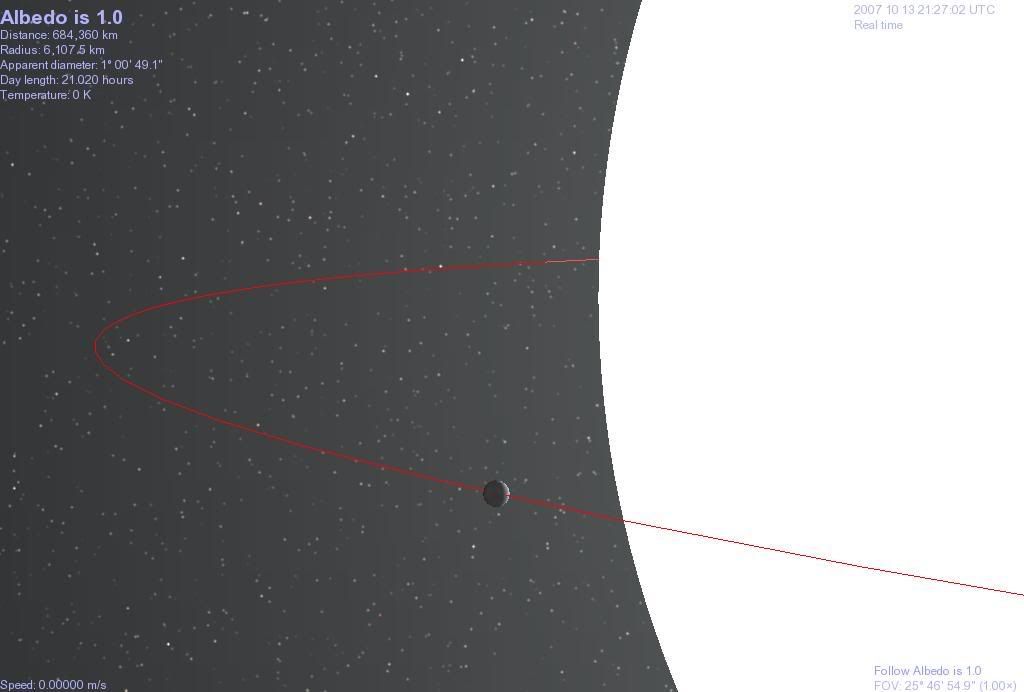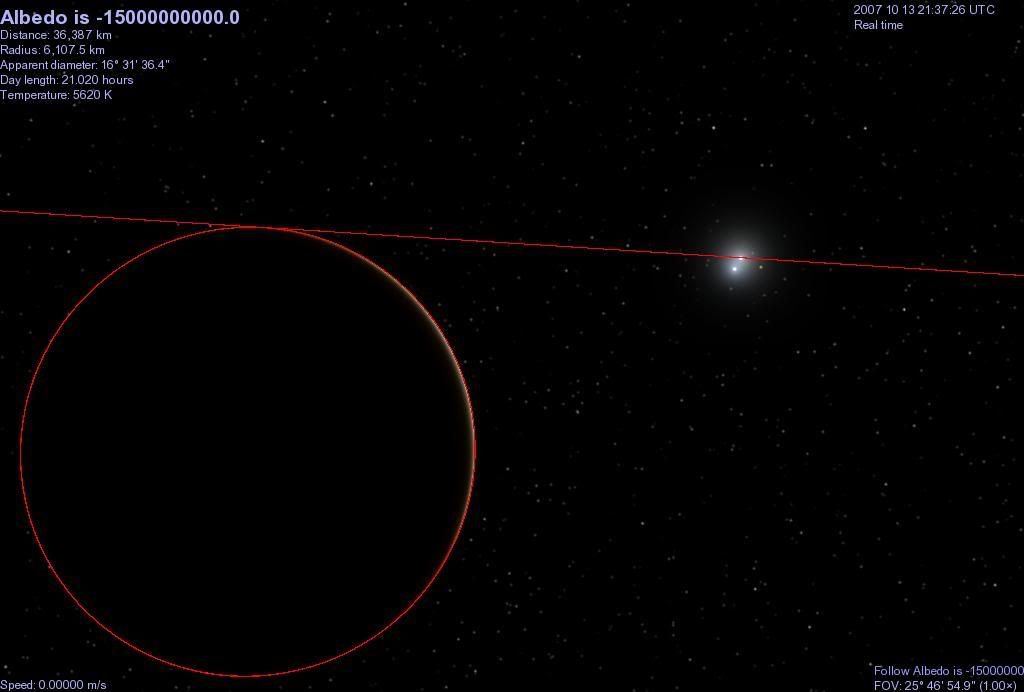MKruer wrote: The only way to raise this is by moving the planet closer to the star.
Or you can decrease the albedo

Albedo is a measure of how much energy the object recieves from the sun. Your planet probably has an albedo of 1, or higher, so it reflects
everything, keeping it really cold (as to why it gives a negative Kelvin value, I don't know. It shouldn't. Maybe it's a bug). An albedo of 0 makes it absorb all the energy it recieves from the sun. If you wanted to decrease Mars' albedo, that would heat it up, but you could only heat it up so much.
MKruer wrote:One thing you have to remember about this program is that it is or tries to be as scientifically accurate as possible, or at least within computational reason...
No it doesn't. Just look at star rendering, and stellar sizes.
MKruer wrote:Ex you can not place an ice world next to a star and have the average temperature read as -200C it?€™s not possible.
Ah but I can with the albedo line of text. If I want, I could put a planet within literal arm's reach of the stellar surface and keep it at absolute zero. Here's an example I made, Sirius Ab (fictional):

I could have put the planet even a metre from Sirius and the temperature would still be absolute zero, as long as albedo is 1. Similarly, I can lower the albedo all I want and get any temperature I want. Celestia even allows me to extend the albedo into the negatives, but it seems large negative values are needed to get high temperatures. For example, here, Sirius Ab migrated 1500 AU away from the star(s):

Mr. Noob, as for your first question, I once had the same problem, and I fixed it by getting a new video card.



